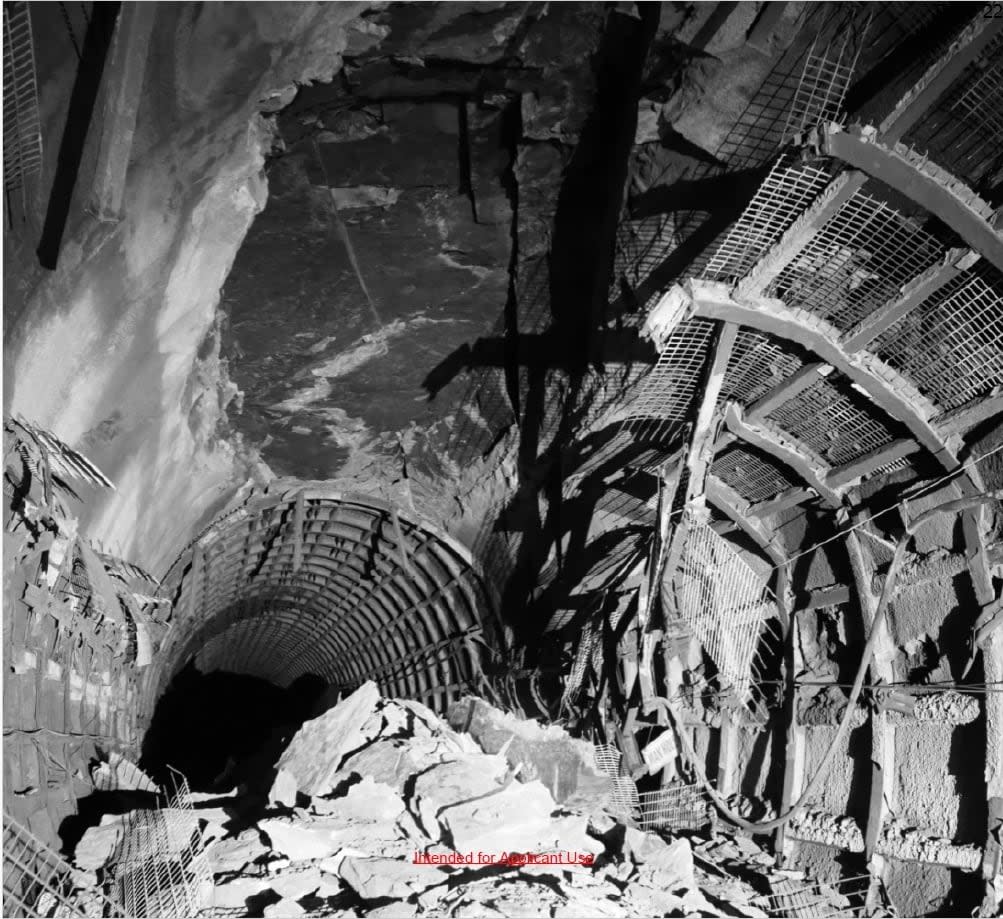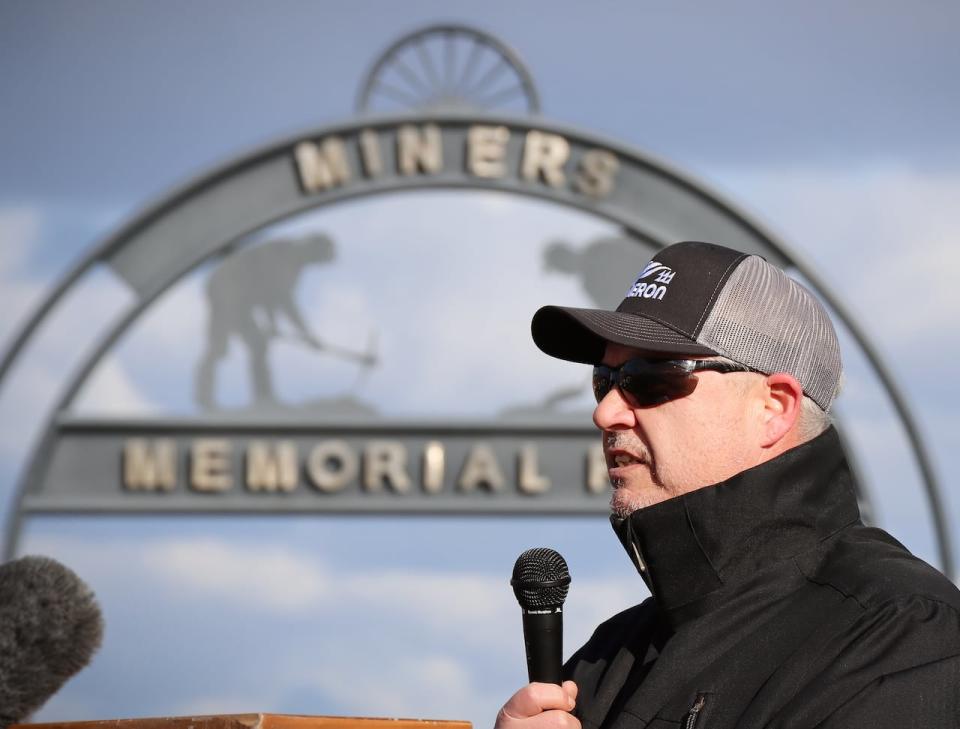Donkin coal miners had 'relatively close call' with second roof fall last summer

Workers at the Donkin coal mine had a "relatively close call" last summer, passing through an access tunnel just 90 minutes before more than three tonnes of rock crashed through the steel roof support structures, according to internal emails from Nova Scotia's Department of Labour.
Black-and-white photos that were included in emails released to CBC News under a freedom of information request show the dramatic results of the roof fall.
In an interview, the province's head of workplace safety called it a "near-miss."
"When I looked at the photos, I immediately thought of those miners and their families, and I'm just so glad and feel so lucky that nobody was hurt or seriously injured," said Scott Nauss, the department's senior executive director of safety. "An unthinkable act could have happened had miners been travelling that particular pathway when that event happened."
The province issued a stop-work order right after the roof fall on July 15 and lifted it on Dec. 27.
The mine has remained idle though, while owner Kameron Coal produces an independent third-party engineering report on its safety plans, which the province requires as a condition if the mine is to operate after Feb. 29.
Labour Minister Jill Balser has said the company is working on that report. The department said as of Tuesday, Kameron Coal had not yet submitted it.

Scott Nauss, Nova Scotia Labour's senior executive director of safety, would not say if he was nervous about more roof falls, but did say photos of the July 15 roof fall were "very concerning." (Robert Guertin/CBC)
No one from the company returned a request for comment.
Documents obtained through a freedom of information request show that even five months after the latest roof fall, government officials were "extremely nervous" about the possibility of more roof falls and wanted to have the minister "fully briefed — before the mine resumes operation — on this situation and the inspector's assessment overall of the potential for additional rockfalls and the safety of the mine in general."
It's not clear from the emails which official wrote that. Another unidentified official responds that commenting on the likelihood of another fall "is difficult, as there is always this possibility."
Nauss couldn't say who said what in the email exchange. He would not say if he was "extremely nervous" about the possibility of another fall, but said the photos were "very concerning."
According to the freedom of information release, Fred Jeffers, executive director of the department's occupational health and safety division, said in a ministerial briefing in July that the large fall occurred in an area where the roof was protected by an older structure made of steel ribs and mesh.
Varied roof protection
The briefing note said a newer method of using cables attached to long bolts in the roof has been "very successful."
It said the roof on either side of the large fall had been newly bolted and remained secure, and other areas protected that way have also remained in place.
The note to the minister said to get the risk to workers to an "acceptable" level.
"We are going to want to see a plan that would accelerate roof bolting of the entire tunnel ... before production resumes," it said.
According to a report by Dalhousie University engineering professor Andrew Corkum, who was hired by the province last summer to review Kameron Coal's safety plans, the company has bolted the roof and added steel mesh in "most" of the tunnel.
"In areas where stability was more of a concern, the rock bolt pattern was enhanced and has been supplemented by installation of cable bolts and steel channels," Corkum said.
"The rock bolting pattern varies based on the hazard assessment classification system as well as based on judgment of the mine engineer."

AJ Hall was one of several miners who rallied in Glace Bay last fall to encourage the government to allow the underground coal mine in Donkin to reopen. (Tom Ayers/CBC)
The mine has experienced 32 roof falls of more than three tonnes since Kameron Coal started production in 2017.
It had suffered a smaller incident one week before the large roof fall in July, in the same part of the tunnel, but it was cleaned up quickly and mining restarted two days later.
Following the release of Corkum's report in October, the province said production could resume if the company updated its hazard assessment system and added roof monitoring measures in the tunnel.
The Labour Department also said the company could only operate under those phase 1 conditions until Feb. 29.

Dalhousie University engineering professor Andrew Corkum says high humidity was a key factor in roof falls and that operating in winter months, when humidity is low, would be OK. (David Laughlin/CBC)
In order to continue past that date, the operator was required under a second phase to hire an independent mining engineer to review its safety plans.
Corkum said last fall that high humidity was a key factor in roof falls and that operating in winter months, when humidity is low, would be OK.
In November, more than 150 people, including several miners, rallied in Glace Bay, asking that the mine be allowed to reopen.
The province said in late December that the company had met the phase 1 conditions. Last month, the minister told reporters the mine operator has been in contact with the department and is intent on meeting the conditions of phase 2.
"It's our understanding that the mine does want to reach those conditions, with the intention of possibly reopening," Balser said.
The department said the mine is among the most regulated and inspected workplaces in the province.
It is frequently subjected to unannounced inspections and since opening in 2017, operator Kameron Coal has been issued with 30 warnings, 40 compliance orders and 17 administrative penalties.
MORE TOP STORIES


